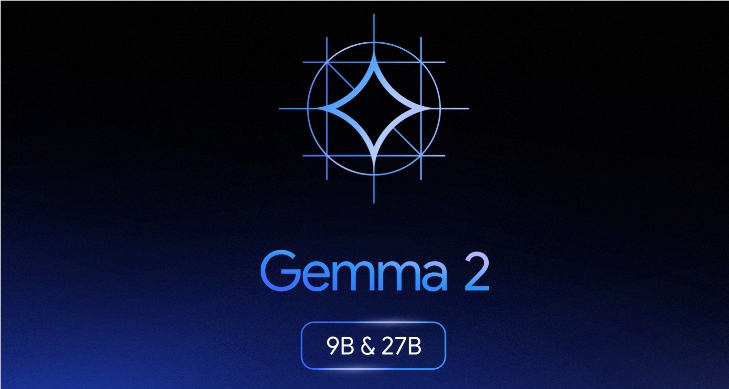Google recently released the latest version of its open source lightweight language model Gemma2, which provides two parameter scales: 9 billion (9B) and 27 billion (27B). Compared with previous generation Gemma models, Gemma2 has significantly improved performance and inference speed, providing researchers and developers with more efficient language processing tools.

Product portal: https://top.aibase.com/tool/google-gemma-2
Gemma2 is based on Google's Gemini model development and focuses on the field of language processing, aiming to provide researchers and developers with more convenient access. Unlike the multimodal and multilingual characteristics of the Gemini model, Gemma2 focuses on improving the speed and efficiency of language processing, making it perform better on a single task.
Gemma2 not only surpasses previous generation Gemma1 in performance, but also competes with larger-scale models. The model is flexible in design and can run efficiently in a variety of hardware environments, including laptops, desktops, IoT devices and mobile platforms. Optimization for single GPU and TPU in particular makes Gemma2 perform well on resource-constrained devices. For example, the 27B model is able to efficiently run inference on a single NVIDIA H100 Tensor Core GPU or TPU host, providing developers with a high-performance and affordable option.
In addition, Gemma2 provides developers with rich tuning capabilities, supporting a variety of platforms and tools. Whether it’s cloud-based Google Cloud or the popular Axolotl platform, Gemma2 offers a wide range of fine-tuning options. Through integration with platforms such as Hugging Face, NVIDIA TensorRT-LLM, and Google's JAX and Keras, researchers and developers are able to achieve optimal performance in a variety of hardware configurations and deploy models efficiently.
In comparison with the Llama3 70B model, Gemma2 performed well. Despite the small size of the parameters, the performance of the Gemma2 27B is comparable to that of the Llama3 70B. In addition, the Gemma2 9B always outperforms the Llama3 8B in benchmarks such as language comprehension, coding, and mathematical problem solving, demonstrating its powerful capabilities in a variety of tasks.
Gemma2 has significant advantages in dealing with Indian languages. Its word segmenter is designed for Indian languages and contains 256k tokens that can capture nuances of language. In contrast, although Llama3 performs well in multilingual support, it has difficulties in tokenizing Hindi scripts due to limitations in vocabulary and training data. This makes Gemma2 more advantageous when dealing with Indian language tasks and becomes the best choice for developers and researchers in related fields.
Gemma2 has a wide range of practical application scenarios, including multilingual assistants, educational tools, coding assistance and RAG systems. Although Gemma2 has made significant progress in many aspects, it still faces challenges in training data quality, multilingual ability and accuracy, and needs further optimization and improvement.
Key points:
Gemma2 is Google's latest open source language model, providing faster and more efficient language processing tools.
The model is based on the decoder converter architecture, pre-trained using the knowledge distillation method, and further fine-tuned through instruction tuning.
Gemma2 has advantages in handling Indian languages and is suitable for practical application scenarios such as multilingual assistants, educational tools, coding assistance and RAG systems.